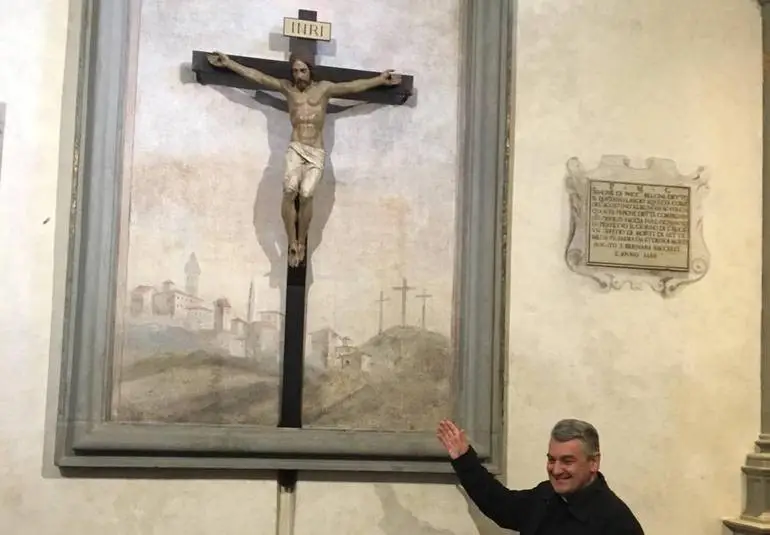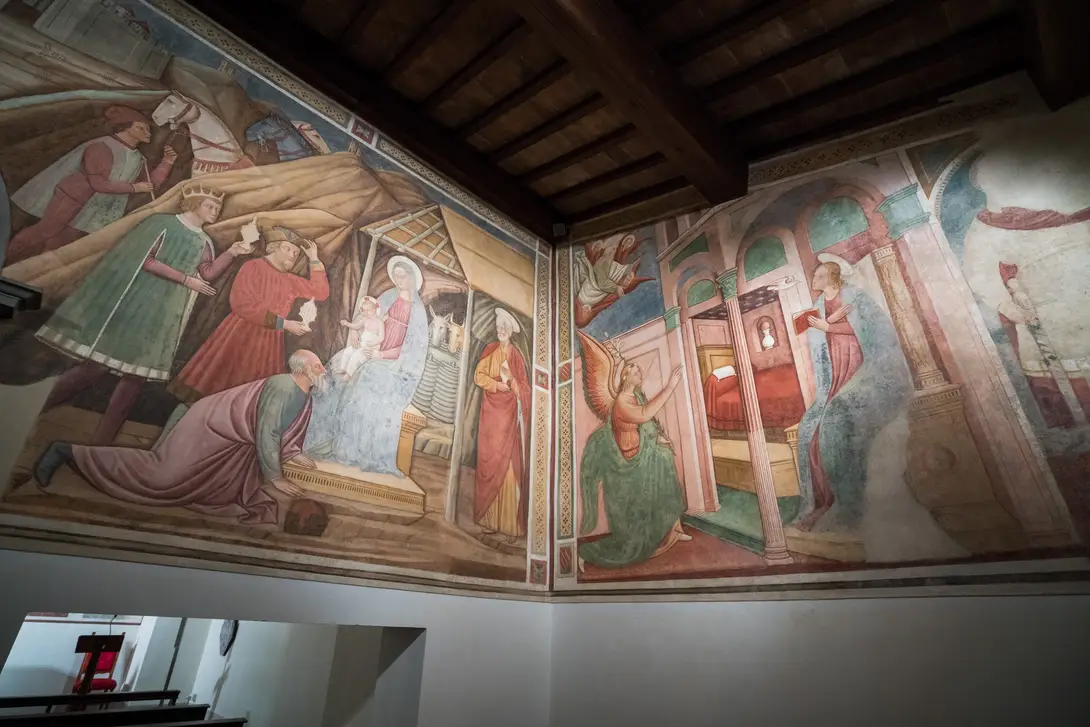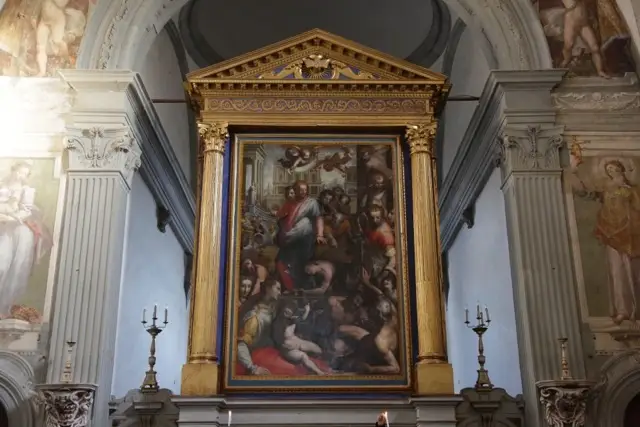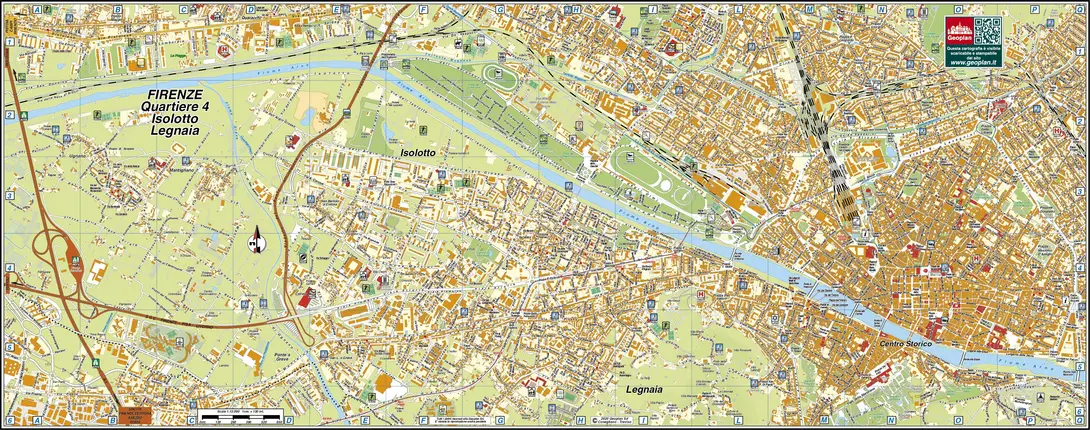The official tourism website of the Municipality and Metropolitan City of Florence
The official tourism website of the Municipality and Metropolitan City of Florence
The official tourism website of the Municipality and Metropolitan City of Florence
The official tourism website of the Municipality and Metropolitan City of Florence

The Isolotto & Legnaia District
This district occupies the South-West area of the city, on the left bank of the Arno River, and it's named after the two major agglomerations around the main street of via Pisana.
In the nineteenth century the Isolotto neighbourhood was mainly characterized by numerous industrial settlements (majolica factories and foundries), while during the twentieth century - especially in the fifties, also thanks to the commitment of the Mayor Giorgio La Pira – the area was subject to a wide-ranging urban planning project: an entire social housing district was built on a plan of residential and green spaces, conceived to develop social aggregation.
Greenery and villas
Many are the green areas of this district: the large park of Villa Vogel – named after the Swiss family who lived there in the early twentieth century - is equipped with a playground for children, and the villa itself, built in the thirteenth century by the Capponi family, houses the administration offices for district 4.
Far from the mass tourism destinations, it is possible to admire an amazing view of the city from the hill of Bellosguardo, especially from the square with the same name. Its slopes rise from the Park of Villa Strozzi with its famous Limonaia, venue for important events. Bellosguardo is an enchanting area, dotted with elegant villas, once inhabited by distinguished personalities (Ugo Foscolo, Giuseppe Garibaldi, Henry James). In this area, visitors can see the ancient Church of San Bartolomeo a Monte Oliveto – with important sixteenth century paintings inside - that for many centuries hosted the Annunciation by Leonardo da Vinci, now at the Uffizi Gallery.
Along the Arno River, the ArgingrossoPark overlook the Cascine Park with a very well-equipped golf course.
Places of art
Interesting traces of an ancient past are still there, despite the heavy building process started in the fifties. For example, the first church of the Isolotto area, Santa Maria della Querce Church, in via Palazzo dei Diavoli, dates back to the fifteenth century: inside valuable masterpieces are preserved. Then, the Oratory of the Church of Sant'Angelo, in Legnaia district, where a fifteenth century wooden Crucifix was recently discovered and attributed to Donatello.
Connections
This District got great benefits from the inauguration of the first tramway line T1, which connects Scandicci (a bordering municipality) to the historical centre of Florence.
Watch the video below:
Comune di Firenze
The altar of the ancient church of Sant’Angelo a Legnaia in via Pisana is adorned by a remarkable painting depicting Saint Michael slaying the devil, by Francesco Curradi.
Moreover, quite recently, the Crucifix belonging to the annexed oratory, has been recognized as an artwork by Donatello, realized by the Renaissance artist in his old age.
It’s the first church built in Isolotto neighborhood, the working-class district inaugurated in the 50s by the city mayors Fabiani and La Pira. The denomination of this cult site comes from the name of the area where the Mannelli family, patrons of the church, had their country residence.
The octagonal building is surmounted by a dome and the access to the oratory is preceded by a 17th century porticato, frescoed by Paolo Schiavo. The same artist also decorated the interior of the church with depictions of saint Francis, saint Quirinus of Tegernsee, John the Baptist with angels, the Evangelists inside the pendentives and the Annonciation on panel (1460).
Il Parco di Villa Vogel è una vasta area verde di oltre 5 ettari circostante l’omonima villa, donato al Comune di Firenze negli anni 80 del Novecento dalla famiglia svizzera Vogel. La valenza ricreativa del parco è valorizzata dalla presenza di una vasca con cascate e getti d’acqua nonché dalle attrezzature esistenti come l’area gioco, la pista di pattinaggio, i tavoli da pic-nic oltre servizi quale il punto ristoro.
The Church of San Bartolomeo at Monte Uliveto, is a place of worship and part of a former monastic complex located in Via Monte Uliveto in Florence.
The complex was founded in 1334 by a monk from the abbey of Monte Oliveto Maggiore and then extended several times over the centuries.
With a single nave and groined vaults, its interior still has many neoclassical frescoes dating back to the sixteenth century and several painted altarpieces, one of which attributed to Vasari’s school (if not painted by the artist himself). Until the nineteenth century, there was also the Annunciation by Leonardo da Vinci before it was moved to the Uffizi.
Argingrosso is a vast green area of Quartiere 4, spreading between Arno’s left riverbank and via dell’Argingrosso, opposite to the most well-known Cascine Park.
This green area is well equipped for all kinds of sports: cycling, horse riding and golfing. Close to Ponte all’Indiano there are also playgrounds, trekking trails and nice little lakes.





